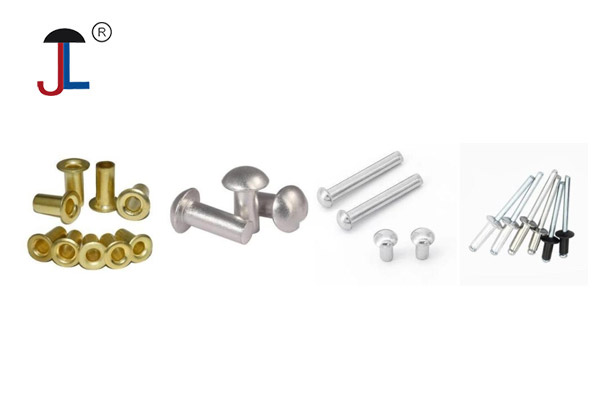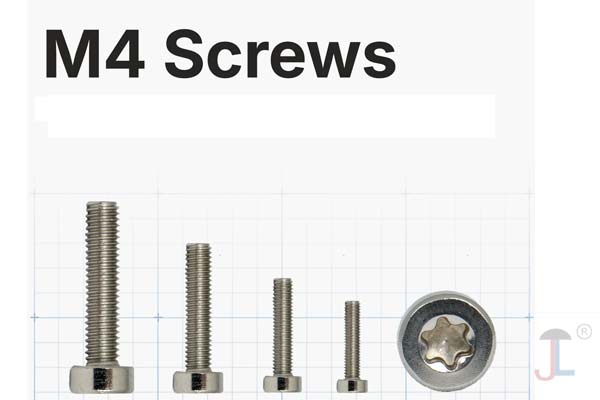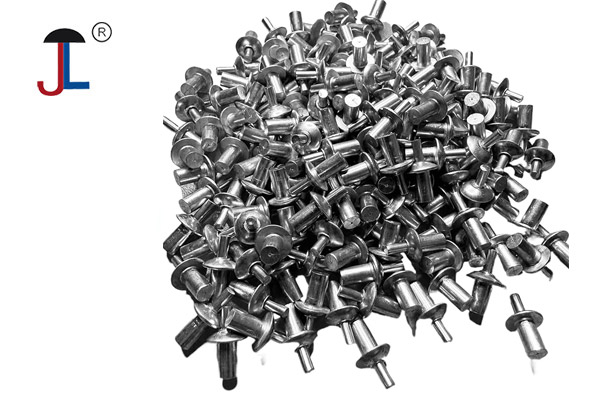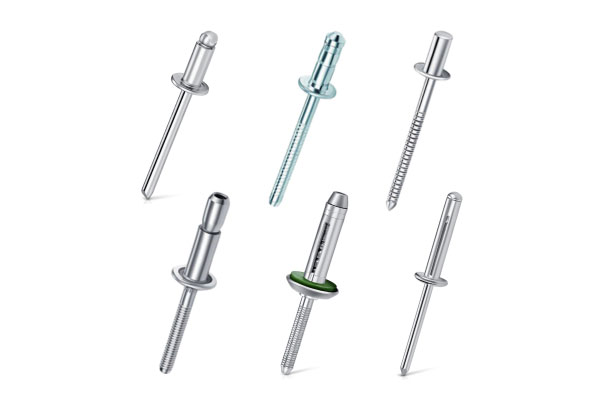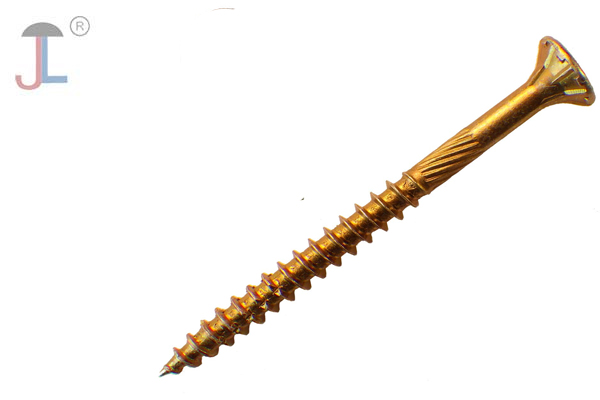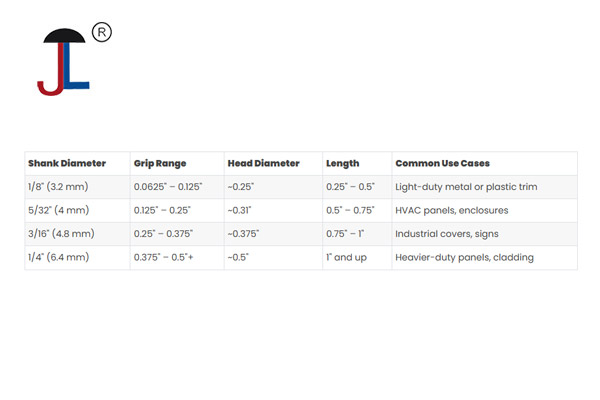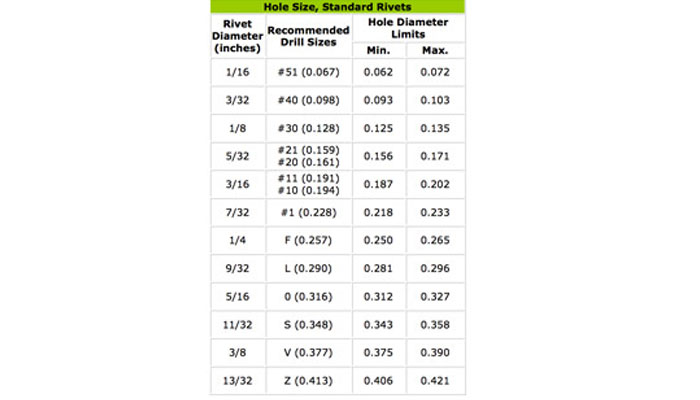Double cap (or double-headed) rivets are essentially hollow tubular fasteners with decorative caps on both ends, which “mushroom” out when set. Because of their dual-cap design, they’re popular in leatherwork, garment trims, and light-duty industrial paneling—where appearance matters and moderate holding power is required. However, their strength varies significantly depending on material, size, and intended use.

1. How They’re Constructed and Installed
-
A double cap rivet consists of two matched caps (male and female) and a short, hollow post (the “tube”).
-
During installation, the tube is pushed through pre-drilled holes in the material, and the caps are pressed together—causing the thin-walled tube to flare and grip the layers.
-
Because they rely on deformation of that hollow tube, they don’t develop the same solid‐shank clamping force as a pop rivet or solid rivet would.
2. Material Choices and Their Impact on Strength
-
Steel (Stainless or Carbon): When made from steel, double cap rivets can offer quite respectable shear and tensile resistance—often comparable to small machine screws in soft‐material applications. In leather or thin‐metal assemblies, steel double caps from reputable suppliers (e.g., Tandy) will typically hold over 100–200 lbf (≈450–900 N) in shear before failing—though exact numbers depend on diameter and wall thickness.
-
Brass or Copper Alloy: These are slightly softer and more malleable than steel. As a result, they’re easier to set (less chance of cracking the material beneath) but yield lower ultimate loads—often in the 50–150 lbf (≈225–670 N) shear range for a standard 5 mm diameter. Being non‐magnetic and corrosion‐resistant, they’re a go‐to for decorative leatherwork.
-
Aluminum: Lightweight and corrosion‐resistant, aluminum double caps excel where weight is critical (e.g., certain plastic panels). However, they often top out around 50 lbf (≈225 N) shear for a 5 mm leg. Their pull‐out (tensile) strength is also limited compared to steel, so they’re best used in applications where parts don’t see high peel or tension loads.
-
Plastic/Nylon: Some specialty double‐cap rivets are molded in nylon or other engineering plastics. They’re quite weak in metal‐to‐metal shear (often under 30 lbf/130 N) but shine in corrosion‐prone or vibration‐sensitive environments—such as HVAC panels or automotive interior trim.
3. Shear vs. Tensile Load Considerations
-
Because the central tube “mushrooms” to fill the cap, double caps are excellent at resisting forces parallel to the board or panel faces (shear). In many small‐scale steel varieties, you’ll see published shear ratings from 200 kg (≈440 lbf) upward—though you must verify with the specific manufacturer’s data sheet.
-
Pull‐through (tensile) loads—i.e., forces trying to pry the layers apart—are usually lower (often 30–70 lbf/130–310 N for 5 mm brass/steel). The steel versions resist more tension because the cap flares into a more rigid “button.” Brass or aluminum may deform first, allowing layers to peel.
4. Practical Tips for Maximizing Strength
-
Match Cap Size to Material Thickness: If the tube is too short, it won’t mushroom properly; too long, and the cap doesn’t compress fully. When the tube doesn’t flare fully inside the cap, you lose shear capacity. Always calculate combined thickness (material + second layer) and pick a post length 1–2 mm longer.
-
Choose the Right Material for the Job: If you need genuine load‐bearing capacity (e.g., tool holsters, belts bearing heavy gear), opt for solid “double‐ended” copper or brass rivets with burrs—and consider upgrading to solid rivets if shear/tensile requirements exceed 200 lbf.
-
Quality Matters: Cheaper imitation double‐cap rivets often have thinner walls or inconsistent tolerances. Upgrading to mid‐range or premium brands (Leathersmith Designs, Buckleguy, etc.) can double or triple real‐world holding strength.
5. How They Compare to Other Fasteners
-
VS. Solid Rivets: A solid copper or brass rivet swells uniformly, delivering up to 300–400 lbf (≈1334–1779 N) in shear for a 1/8″ (≈3 mm) solid rivet—far above a similarly sized double cap’s 100–200 lbf. Solid rivets are preferred in load‐critical leather gear or metal aircraft panels.
-
VS. Pop (Blind) Rivets: Blind rivets use a mandrel to expand a solid sleeve, offering higher and more consistent clamping forces. A common 4 mm (5/32″) steel blind rivet can achieve 200–350 lbf shear—comparable to steel double caps of the same diameter—but blind rivets require more clearance behind the panel.
In short:
-
Double cap rivets are best viewed as moderate‐strength, decorative/functional fasteners—great for leather goods, thin‐gauge sheet work, and light‐duty industrial panels.
-
Shear strength (with steel variants) typically ranges from 100 to 300 lbf (≈445–1335 N) for common 5 mm sizes; tensile (pull‐through) strength often lies in the 30–150 lbf (≈130–670 N) window, depending on material.
-
If you need true load‐bearing capacity (above 200 lbf in shear or 100 lbf in tension), consider solid rivets or pop rivets instead, especially for leather holsters, safety equipment, or structural metalwork.

